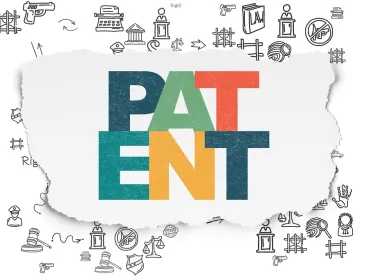Addressing the issue of standing in a patent infringement case, combined with the requirements of joinder under Fed. R. Civ. P. 19, the US Court of Appeals for the Federal Circuit vacated a dismissal based on lack of standing for refusal to permit joinder of the rights holder. Lone Star Silicon Innovations v. Nanya Tech. Corp., Case No. 18-1582 (Fed. Cir. May 30, 2019) (O’Malley, J).
Lone Star licensed several patents from Advanced Micro Devices (AMD). Part of the agreement between Lone Star and AMD limited Lone Star’s ability to assert the patents against only those entities specifically listed in the agreement. No new entities could be added to the list unless Lone Star and AMD both agreed. If Lone Star sued an entity, AMD retained the right to sublicense the patents to the entity without Lone Star’s approval. AMD further retained (1) the right to prevent Lone Star from assigning the patents or allowing them to enter into the public domain and (2) the right for AMD and its customers to practice the patents, and provided that AMD would share in any revenue Lone Star generated through its monetization efforts.
Lone Star sued Nanya, an entity listed in the agreement, for patent infringement. In the complaint, Lone Star alleged that AMD transferred to it “all right, title, and interest” in the patents. Lone Star delayed almost a year after filing the complaint to produce the transfer agreement. Once it did, Nanya filed a motion to dismiss under Fed. R. Civ. P. 12(b)(1). The district court focused on three aspects of the transfer agreement:
-
AMD’s ability to control how Lone Star asserted or transferred the patents
-
Lone Star’s inability to practice the patents
-
AMD’s right to share in the monetization of the patents
The district court concluded that AMD did not transfer all substantial rights in the patents to Lone Star, and that Lone Star could therefore not sue in its own name. The district court refused Lone Star’s motion to join AMD in the lawsuit, explaining that to do so “would reward Lone Star for its litigation gimmick and unfairly prejudice defendants.” The district court dismissed the case. Lone Star appealed.
On appeal, Lone Star argued that it possessed all substantial rights and could assert the patents in its own name, but that if the court found it could not, it should be permitted to join AMD as a plaintiff before the case was dismissed.
In support of its “all substantial rights” contention, Lone Star relied on a single provision of the agreement that conveyed “all right, title, and interest” in the patents to Lone Star. The Federal Circuit was not convinced, explaining that “labels given by the parties do not control.” Instead the Court look at the totality of the circumstances to determine whether AMD retained any substantial rights.
The Federal Circuit considered two salient rights in its analysis: enforcement and alienation. As to enforcement, the Court found that Lone Star needed AMD’s consent to file suit against unlisted entities, and therefore it did not possess the right to sue for “all infringements.” As to alienation, the agreement restricted Lone Star’s ability to transfer the patents to a buyer unless the buyer agreed to be bound to the terms of the agreement, and if the buyer did not, AMD could halt the sale. Because AMD retained control over these rights, the Court determined that Lone Star did not have all substantial rights to sue in its own name.
Nanya argued that because Lone Star was not a patentee and never alleged that it was an exclusive licensee, it lacked standing to sue and the case should be dismissed. The Federal Circuit rejected Nanya’s argument, finding that Lone Star had sufficient exclusionary rights to confer standing at the pleading stage.
Finally, the Federal Circuit determined that the district court erred in dismissing the case and that Lone Star should be given the opportunity to join AMD as a necessary party under Fed. R. Civ. P. Rule 19. The Court noted that joinder of AMD was both “required” and “necessary” under Rule 19, and that “application of Rule 19 is mandatory, not discretionary.” Importantly, the Court observed that Rule 19 applies “whether a defendant invokes Rules 12(b)(1), (6), or (7) or none of the above. The case was remanded to the district court for further proceedings.




 />i
/>i

